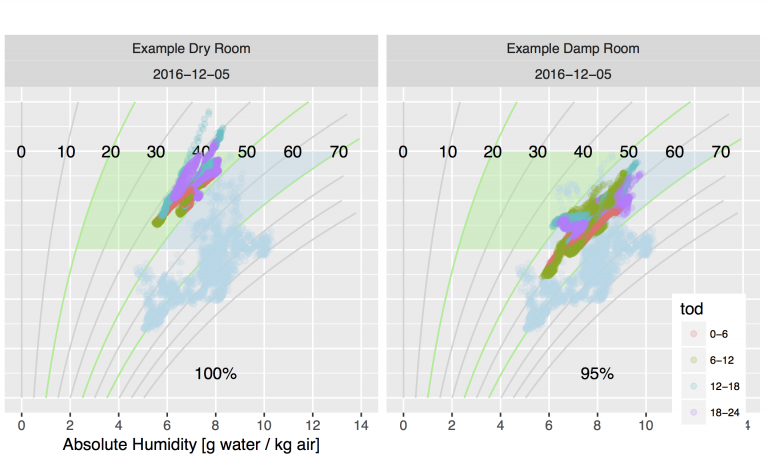Imagine, if you take a cold and damp house, and then wrap it in extra insulation and draughtproofing. What do you get? A warm and damp house. The extra insulation and draughtproofing reduce the air circulating in a house, which is a reduction of the ability for a house to dry itself.

How do we get a warm and dry house? Capture the sun, add heating to the house, and add ventilation. This can be as simple as ensuring the windows of a house are open during the day, especially when it is sunny out. Or you can add some sort of ventilation system that takes in outside air into the house. Your heat pump does not do this – all a heat pump does is recirculate the damp air that is already inside your house.
On the whole, outside air is dryer than inside air, especially once it is heated to inside temperatures. This is why bringing outside air into the house helps to dry the house. There is some cost to heating outside air, but the benefit is a dryer, healthier house. Also, if a ventilation system is used, this cost can be reduced if a heat recovery ventilation system is used. Of course using windows for ventilation is the cheapest option of all!

Most of the moisture (>85%) in a house is in the furnishings and building materials in the house. Simply removing moist air once will not dry a house, as dampness will just evaporate from furnishings and building materials, and the air will quickly become damp again, within minutes. A damp house needs repeated flushing of the air within the house so that the furnishings and building materials within the house slowly begin to dry.
Read about our recent research with the Valley Community Workspace community group: ValleyWorkspace.org-BuildingMoistureStorage (PDF)
Also see “The Wetting and Drying of Timber Framed Walls“
Categories
